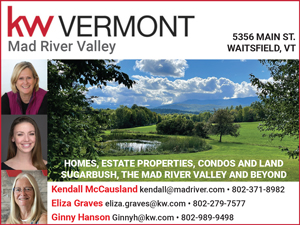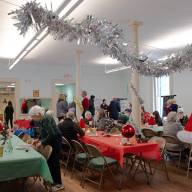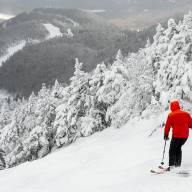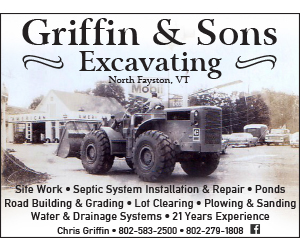To the Fayston Planning Commission:
I am writing to clarify a few things after the July 14 meeting.
As we read the current LURs, you only need to get a permit if you are building a bike trail as an accessory to an Outdoor Recreation Facility. No other trail currently requires one.
If our understanding is correct, your intentions are that the changes in wording you are suggesting are to fix the broken link in the current LURs, educate the landowners about how to build ecologically sustainably trails, and eliminate the needed permit as long as the recommendations are followed. You also seem to want to be able to legally go after someone who does not follow these recommendations, even though there is no town official who will be in charge of inspection and enforcement, except maybe the zoning administrator. It also seems that you see no reason for defining the differentiation in usage between public and private usage. Is this correct?
Going on the assumption we understood correctly –
I took a deep dive into the link you have attached to all trails requirements.
First thoughts are:
1. Just which guidelines associated with the link (fpr.vermont.gov/recommended-trail-standards ) are you wanting anyone to follow? If you think that most well-meaning citizens will take the deep dive into some of the links off that page, into mostly federal documents ranging from 54 to over 300 pages of lengthy bureaucratic verbiage to try to find anything that pertains to their trail/ path preference, we think they will give up on it all very quickly. There must be some more easily consumable information than anything I found there. Didn’t the CRV come up some guidelines for all towns in The Valley? Why not wait until the state finishes its document on trails that I understand they are in the process of?
2. That by putting in the word “shall” instead of “should” you are not suggesting or guiding – but legally demanding, and our feeling is that this will not help your cause, and will just get the fur up on landowners’ backs like it does ours. This could drive trail building further underground, get more land legally posted and trails shut off. Which is all counter to our current Town Plan. In our opinion this is not a very Vermont way of doing things, and we would argue that most Vermonter landowners are very keen on protecting the environment, and take pride in be being good land stewards.
3. If our understanding is correct the LURs must reflect the Town Plan. Why not do the work for the Town Plan first, since that needs doing, putting this on hold until you have the townspeople’s guidance, before making changes to the current LURs on trails?
4. I spent some time researching if other towns had definitions of trail or path in their LURs, or zoning regulations. I picked ones I know have some trail networks currently. I checked Stowe, Charlotte, Middlebury, Underhill, and Tunbridge. None of these had any mention of trail or path in their definitions. Most of them had the following wording for Outdoor Recreation Facility exempting residents from permits.
When the Town Plan is done, here are some ideas for wording. We are not lawyers, so no idea how to legally word the definitions, but it must matter.
Edit ideas for Definitions:
Outdoor Recreation Facility. Any facility for outdoor recreation, including but not limited to. tennis courts, golf courses, athletic fields, swimming pools, and trails for hiking, horseback riding, bicycling, snowmobiling, alpine and cross-country skiing; except for such facilities that
_____________________________________
Article 10. Definitions Page 143
are accessory to a residential single family dwellings unit, or paths on privately held land for private de minimis use, and ski lifts and ski lift facilities that are defined separately for the purposes of these regulations (see Ski Lift, Ski Area Operations).
(reasons for suggestions: we don’t think single-family dwelling unit does not cover an added ADU or duplex or common land in a small development, or someone’s large undeveloped land)
Path. A cleared way for de minimis private use, pedestrians and/or bicycles that may or may not be improved, and may or may not connect to a public trail.
Trail. means land used for hiking, walking, bicycling, cross-country skiing , snowmobiling, all-terrain vehicle riding, horseback riding, and other similar activities. Trails may be used for recreation, transportation, and other compatible purposes.
Maybe instead of trying to make a distinction via “trail” and “path,” or public or private, change it to classes of trails like I saw in one of the federal documents. We would think that most private landowner trails/paths come under the “primitive path” description in one of those federal documents.
_______________________________
To clear up some assumptions of thinking we just don’t want to follow the guidelines on our own land, here is who we are, because most of you do not know us.
My husband Ben has worked for the AMC in the White Mountains, as a hutman and on the trail crew. He has been a paid trail maintenance staff for a local ski touring center.
Ben and I are former Sugarbush paid ski patrollers.
I spent approximately 30 years as a hiking and back country ski guide for several local businesses.
Both Ben and I are founding board members of MRVBC (Mad River Valley Backcountry Coalition, a Chapter of the Catamount Trail Association).
Our board has been part of the Community Recreation Visioning effort, we are trail maintenance stewards of Section 19S of the Catamount trail.(from the Battleground to Huntington Gap) As a Chapter of the CTA, we had editing input to the new Forest, Parks, and Recreation Vermont Backcountry Ski Handbook.
We helped found this chapter to educate the public on proper stewardship, etiquette, and safety protocols of backcountry skiing. We have been board members for over five years. We are the last two remaining founders still on the board.
We have been involved in several deep dives into our town LURs. We are active and involved citizens concerned about our environment, landowner rights, and protections. We have been landowners in Fayston for almost 40 years, and lived in The Valley for almost 50 years.
We bought our land from Ward Lumber Company that had existing logging roads that we have used and maintained as trails. None of our trails have ever had erosion in any of the flood events in almost 40 years.
We hope this clears things up, and helps your discussions.
Bridgewater lives in Fayston.
You might also like













